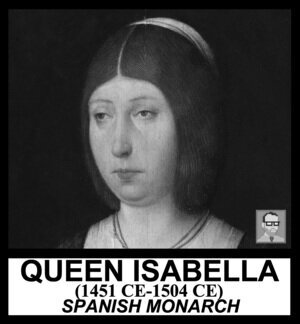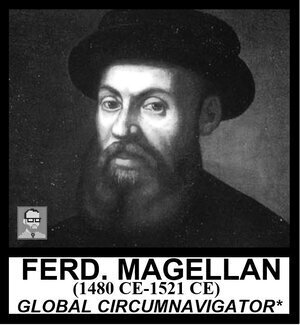No other era is as easy to summarize as the EARLY MODERN (1450-1750) era. This is the era the Europeans "wake-up", expand, and build empires. I'm not talking about Charlemagne here. I'm talking about the British Empire. I'm talking about the Dutch East India Trading Company. I'm talking about the Spanish Empire. This is a new Europe. This isn't Marco Polo. These Europeans will come to your land and stay there. They will take over most of the world in this era (if not, in the next). Beyond the Maritime empires (and the effect of their establishment), many huge land empires emerged (most notably the Islamic Mughal and Ottoman Empires). Of course, China is important... It always is. So, here is the Early Modern Period...
The next two of the nine units in AP WORLD: MODERN are featured in this time period. See the chart below for the exact weighting:
CLICK BELOW for pages dedicated to the TWO UNITS in this PERIOD.
Below are the ACTUAL STANDARDS provided by the College Board for what you have to know for the 1450-1750 Period:
The interconnection of the Eastern and Western Hemispheres, made possible by transoceanic voyaging, transformed trade and had a significant social impact on the world.
Knowledge, scientific learning, and technology from the Classical Islamic and Asian worlds spread, facilitating European technological developments and innovation (THE MAP ABOVE IS FROM THE POST-CLASSICAL PERIOD, BUT IT’S THE MOVEMENT OF THESE THINGS ACROSS THE TRADE ROUTES THAT ALLOW FOR THE DEVELOPMENTS OF THE EARLY MODERN PERIOD (1450-1750).
The developments included the production of new tools, innovations in ship designs, and an improved understanding of global wind and currents patterns— all of which made transoceanic travel and trade possible.
New state-supported transoceanic maritime exploration occurred in this period.
The new global circulation of goods was facilitated by chartered European monopoly companies…
This map is taken directly from the classic 2006 DBQ question on this very topic.
… and the global flow of silver, especially from Spanish colonies in the Americas, which was used to purchase Asian goods for the Atlantic markets and satisfy Chinese demand for silver. Regional markets continued to flourish in Afro–Eurasia by using established commercial practices and new transoceanic and regional shipping services developed by European merchants.
Mercantilist policies and practices were used by European rulers to expand and control their economies and claim overseas territories. Joint-stock companies, influenced by these mercantilist principles, were used by rulers and merchants to finance exploration and were used by rulers to compete against one another in global trade.
The Atlantic trading system involved the movement of goods, wealth, and labor, including enslaved persons.
The Atlantic trading system involved the movement of labor—including enslaved persons—and the mixing of African, American, and European cultures and peoples, with all parties contributing to this cultural synthesis.
The new connections between the Eastern and Western Hemispheres resulted in the exchange of new plants, animals, and diseases, known as the Columbian Exchange.
European colonization of the Americas led to the unintentional transfer of disease vectors, including mosquitoes and rats, and the spread of diseases that were endemic in the Eastern Hemisphere, including smallpox, measles, and malaria. Some of these diseases substantially reduced the indigenous populations, with catastrophic effects in many areas.
American foods became staple crops in various parts of Europe, Asia, and Africa. Cash crops were grown primarily on plantations with coerced labor and were exported mostly to Europe and the Middle East.
Afro–Eurasian fruit trees, grains, sugar, and domesticated animals were brought by Europeans to the Americas, while other foods were brought by enslaved persons from Africa.
Populations in Afro–Eurasia benefited nutritionally from the increased diversity of American food crops.
In some cases, the increase and intensification of interactions between newly connected hemispheres expanded the reach and furthered development of existing religions, and contributed to religious conflicts and the development of syncretic belief systems and practices.
The Protestant Reformation marked a break with existing Christian traditions and both the Protestant and Catholic reformations contributed to the growth of Christianity.
Political rivalries between the Ottoman and Safavid empires intensified the split within Islam between Sunni and Shi’a.
Sikhism developed in South Asia in a context of interactions between Hinduism and Islam.
Although the world's productive systems continued to be heavily centered on agriculture, major changes occurred in agricultural labor, the systems and locations of manufacturing, gender and social structures, and environmental processes.
Look familiar? This is info from the LAST period (POST CLASSICAL 1200-1450), but the College Board is saying traditional labor systems intensified… So, here are the main ones from the previous period…
The demand for labor intensified as a result of the growing global demand for raw materials and finished products. Traditional peasant agriculture increased and changed in nature, plantations expanded, and the Atlantic slave trade developed and intensified.
Peasant and artisan labor continued and intensified (Frontier settlements in Siberia Russia, Cotton textiles in India, Silk production in China) in many regions as the demand for food and consumer goods increased.
Enslavement in Africa continued in its traditional forms, including incorporation of enslaved persons into households and the export of enslaved persons to the Mediterranean and the Indian Ocean regions.
The growth of the plantation economy increased the demand for enslaved labor in the Americas, leading to significant demographic, social, and cultural changes.
Newly developed colonial economies in the Americas largely depended on agriculture, utilized existing labor systems, including the Incan mit’a, and introduced new labor systems including chattel slavery, indentured servitude, and encomienda and hacienda systems.
Imperial conquests and widening global economic opportunities contributed to the formation of new political and economic elites, including in China with the transition to the Qing Dynasty and in the Americas with the rise of the Casta system.
The power of existing political and economic elites fluctuated as the elites confronted new challenges to their ability to affect the policies of the increasingly powerful monarchs and leaders.
Empires achieved increased scope and influence around the world, shaping and being shaped by the diverse populations they incorporated.
Rulers continued to use religious ideas, art, and monumental architecture to legitimize their rule.
Many states, such as the Mughal and Ottoman empires, adopted practices to accommodate the ethnic and religious diversity of their subjects or to utilize the economic, political, and military contributions of different ethnic or religious groups. In other cases, states suppressed diversity or limited certain groups’ roles in society, politics, or the economy.
Recruitment and use of bureaucratic elites, as well as the development of military professionals, became more common among rulers who wanted to maintain centralized control over their populations and resources.
Rulers used tribute collection, tax farming, and innovative tax-collection systems to generate revenue in order to forward state power and expansion.
Imperial expansion relied on the increased use of gunpowder, cannons, and armed trade to establish large empires in both hemispheres.
Europeans established new trading posts in Africa and Asia, which proved profitable for the rulers and merchants involved in new global trade networks.
Some Asian states sought to limit the disruptive economic and cultural effects of European-dominated long-distance trade by adopting restrictive or isolationist trade policies.
The expansion of maritime trading networks fostered the growth of states in Africa, including the Asante and the Kingdom of the Kongo, whose participation in trading networks led to an increase in their influence.
Despite some disruption and restructuring due to the arrival of Portuguese, Spanish, and Dutch merchants, existing trade networks in the Indian Ocean continued to flourish and included intra-Asian trade and Asian merchants.
Land empires included:
THE COLLEGE BOARD DOES NOT MENTION THE NEXT FOUR IN THEIR LAND EMPIRES LIST. BUT, THEY DO COME UP IN OTHER AREAS OF THE CURRICULUM AND ARE LAND EMPIRES… SO, I’M INCLUDING THEM TOO…
Driven largely by political, religious, and economic rivalries, European states established new maritime empires,including:
Political and religious disputes led to rivalries and conflict between states.
Economic disputes led to rivalries and conflict between states.
State expansion and centralization led to resistance from an array of social, political, and economic groups on a local level.
Below are the 43 people to know for the EARLY MODERN PERIOD (1450-1750). Since the two units in this period are BOTH about Empire Building… so are most of these people. These aren’t ‘MUST-KNOW’ people. But, these people are either EXPLICITLY (You MUST know this) or IMPLICITLY (it might help you to know this) by the College Board. ENJOY!
































































































